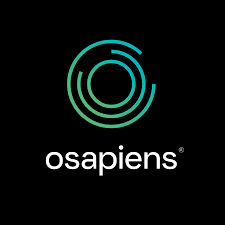Embedding Compliance as a Service with Technology

In an increasingly regulated business environment, compliance can no longer be treated as an administrative afterthought. Embedding compliance as a service with technology integrates regulatory oversight directly into operations. This integration reduces human error. It accelerates decision-making and lowers costs. As regulatory requirements multiply across sectors, companies are recognising that reactive approaches are no longer sufficient.
Understanding Compliance as a Service
Compliance as a service (CaaS) delivers regulatory expertise and automation through cloud-based platforms. From KYC verification to audit reporting, these services monitor operations in real time, providing actionable insights and audit-ready records. When CaaS is embedded within business workflows, compliance becomes a built-in feature. It is not an external process. This integration enables organisations to scale without multiplying risk.
The Financial Imperative
Non-compliance carries a heavy cost. The Ponemon Institute estimates the average annual expense of regulatory failures at $14.82m, compared with $5.47m for organisations with robust compliance programmes. In 2022, US regulators fined 16 Wall Street firms a combined $1.8bn for record-keeping and off-channel communication failures. Beyond direct penalties, 69% of companies report reputational damage from breaches has long-term effects on revenue. Embedding compliance as a service with technology mitigates these financial and reputational risks by ensuring continuous monitoring and automated enforcement.
Technology as the Backbone
Artificial intelligence and machine learning are increasingly central to compliance operations. KPMG reports that 68% of financial services firms prioritise AI for risk management. These firms use algorithms to analyse data, predict potential violations, and reduce false positives. Robotic process automation can manage repetitive tasks. These tasks include evidence collection, transaction screening, and report generation. This frees compliance teams to focus on judgement-based activities.
Efficiency Gains and Operational Impact
Automation drives measurable efficiency. Firms that embed compliance within workflows save approximately five hours per week per operator, equating to over 250 hours annually. Embedding checks into customer journeys also accelerates onboarding and reduces abandonment, a vital advantage where time to revenue matters. These efficiencies allow organisations to redeploy resources towards strategic initiatives such as expansion and innovation.
Concrete Success Stories
Austrian bank Erste Group exemplifies the benefits of embedded CaaS. The bank automated client onboarding. It also automated more than 50 compliance checkpoints. As a result, they reduced processing time by 60% and maintained regulatory standards. Similarly, healthcare technology firms have used embedded compliance platforms to avert potential fines exceeding $2m. They achieve this by monitoring HIPAA compliance in real time. These examples demonstrate how technology-embedded CaaS can simultaneously reduce risk and drive growth.
Third-Party Risk and Governance
Compliance breaches often originate with vendors or counterparties. Extending compliance automation into third-party workflows is operationally challenging but crucial. Embedded CaaS platforms provide APIs and audit-ready evidence, enabling organisations to maintain oversight without manual intervention. This approach is cost-effective compared with post-incident remediation or regulatory penalties.
Regulatory Agility
Regulatory landscapes are dynamic. Embedding compliance within operational systems allows companies to implement rule changes quickly and uniformly. Rather than relying on manuals or training updates, organisations can update rules centrally and deploy them across regions. According to Accenture, 72% of fintech firms consider scalable compliance solutions critical for global growth. This reflects the strategic advantage of embedded, technology-driven compliance.
Cultural and Skills Transformation
Embedding compliance requires cross-functional collaboration. Compliance, engineering, and product teams must work together, and staff need both technical and regulatory expertise. Investing in these skills pays dividends. Telemetry from embedded systems creates a feedback loop. This loop continuously improves controls and reduces incidents.
Practical Steps for Embedding Compliance
Companies should begin with high-risk processes and integrate automated, testable controls. APIs for KYC establish part of the foundation of an embedded CaaS strategy. Centralised immutable evidence stores and analytics to reduce false positives complete the foundation. Automation should handle repetitive tasks, with human oversight retained for complex judgements. Transparent governance and service-level agreements from providers ensure that responsibilities are auditable and clear.
Board-Level Implications
Embedded compliance is not just operational; it is strategic. Real-time visibility allows boards and executives to monitor regulatory exposure continuously. This enables faster and more informed decisions on product launches, market entry, and investment. Firms with technology-driven compliance report higher investor confidence and lower long-term remediation costs.
Conclusion
Compliance can no longer be an afterthought. Embedding compliance as a service with technology reduces risk, lowers costs, and enables organisations to scale responsibly. With regulatory pressures mounting, companies that integrate CaaS into their operational fabric gain a strategic advantage. They turn compliance from a cost centre into a driver of sustainable growth.





